Why Big Organizing Works
What we learned from Bernie Sanders' presidential campaign and many other movements is that far more people are willing to step up if you ask them to do something big to win something big.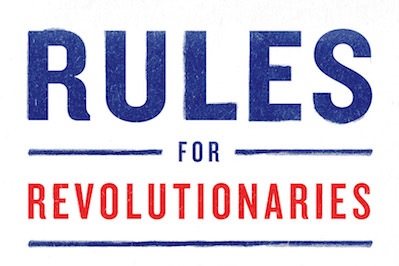
Chelsea Green Publishing
In Rules for Revolutionaries we talk about big organizing. It’s a way to understand mass revolutionary organizing that’s relevant today. Mass revolutionary organizing is what powered virtually every transformational movement in US history from anticolonial rebellions up through the civil rights, women’s rights, and gay rights movements.
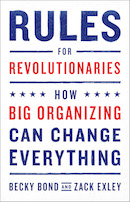 How Big Organizing Can Change Everything
Purchase in the Truthdig Bazaar
How Big Organizing Can Change Everything
Purchase in the Truthdig Bazaar
By the end of the twentieth century, however, big organizing had been almost completely supplanted by a plodding, one-by-one organizing orthodoxy that we call small organizing. The rise of small organizing is a complex story involving the professionalization of politics, attempts by the liberal establishment to channel radical impulses of working class people and people of color into incrementalist politics, and the ascendancy of a bipartisan technocratic elite in both the Democratic and Republican Parties that has been accelerating the concentration of power in the hands of an increasingly small number of mega corporations and institutions.
We believe that it’s time to get back to big organizing in a big way. It’s already happening, as evidenced not only by the Bernie Sanders campaign, but also by other campaigns and movements before it, such as Obama in 2008, Occupy Wall Street, the effort to unseat George W. Bush in 2003–2004. We also see it in the immigration movement, in particular the DREAMers, the Movement for Black Lives, and to some degree in movements on the right such as the campaign of Ron Paul in 2004, the rise of the Tea Party, and even some elements of the madness that was the Trump campaign.
Big organizing is what leaders do in movements that mobilize millions of people.
Not everyone in these movements is a leader, but in big organizing volunteer leaders emerge by the thousands from every classroom, family, office and work area, neighborhood, and prison block. The movement doesn’t need to awaken or even train them—these leaders emerge ready to make change, and they bring their full selves and life experience to the task of building a movement that works. Our families, workplaces, schools, social networks, and other institutions are all inherently political. And in the current social context, people don’t need to be awakened politically—they are ready to get to work to make change.
A movement powered by big organizing provides these already existing leaders with a scalable way to make a difference that evolves and becomes more sophisticated and powerful over time. On the Bernie campaign this looked like volunteer leaders holding phone-banking parties, staging volunteer canvasses, and holding volunteer-led mass organizing meetings. In other movement contexts, volunteer leaders would take on different “rinse and repeat” tasks.
The point is not that the revolution will be phone-banked, but that the revolution will be led by volunteer leaders who take on the work of a campaign plan, a plan that is so big it can only be accomplished when everyone who wants change (a majority of the people) works together. This could be everyone on a campus, in a community, in a workplace or industry, or in the entire country.
******
In big organizing we have big target universes. We need to talk to everyone—not just narrow slices of assumed swing voters—about what we want to achieve. We have to get as many people as possible engaged in the work of talking with voters. We have to have voters make demands of their representatives in Congress. Together, we will constitute a wave that will swamp the influence of big money, corporate media, and other establishment players who are invested in maintaining the status quo.
What do big organizing goals look like? Make public college free. End the drug war and stop the mass incarceration of black and brown people. Let everyone enroll in Medicare and make health care truly universal. Pursue an industrial policy that seeks to put everyone to work in the best jobs possible. None of these are crazy things to ask for. And it’s not crazy to ask for them all at once. In fact, all of those things are the status quo in almost every high- and middle-income country in the world. Bernie Sanders called for them, and he almost won the presidential primary. Our problems are big, so our solutions must be big as well. To achieve them we need a new kind of organizing, and that is big organizing.
Big organizing rarely works around a single issue. Our struggles are all connected. We can’t achieve universal health care until we have immigration reform. We can’t fix income equality until we deal with structural racism and the historical legacy of slavery. We can’t resolve national and global security issues or reach full employment without working as hard as possible to stop climate change. Big organizing also needs to have a clear and credible theory of change that explains why organizing matters. Bernie’s message was that if we wanted to win on all of the issues, we had to organize for a political revolution.So how do we talk to everybody about our big ideas? Part of the answer is to leverage technology to talk to everyone and allow thousands to scale up into leadership roles. What that looks like is a volunteer-driven campaign with consumer software—connected by custom coding—at the center; this structure makes it possible to scale the participation of people doing sophisticated work on central plans.
Small organizing candidate campaigns depend on so-called “big data” to narrow the number of people that must be engaged with predictive modeling, micro targeting, and message testing and segmentation. Big organizing depends on technology as well, but it emphasizes a very different approach. Big organizing uses technology platforms, particularly free consumer-oriented social collaboration tools—to get as many people as possible engaged in executing a campaign plan and to enable those people to talk to each other and to as many voters as possible regardless of where they live or how much time they have to spend doing it each week.
In big organizing, volunteers act as the staff of the campaign. With a structure where leadership roles at nearly every level are primarily filled by volunteers, a campaign can scale up with everyone doing more and more valuable work at every level.
In contrast, a campaign that only engages volunteers in basic tasks breaks down if there’s a huge influx of people willing to help. For example, if too many volunteers show up for Get Out The Vote (GOTV), organizers run out of walk packets. Too often, they’ll send the extra volunteers to hold signs on street corners or some equally worthless task that won’t impact the outcome of the election. Big organizing demands a structure that scales. And this structure requires the ability to absorb and delegate work to volunteers at all management levels as the campaign grows.
In our corner of the Bernie campaign, we attempted to build a big organizing structure capable of accommodating limitless numbers of volunteers by combining technology with old-school peer-to-peer organizing. The result was a national volunteer apparatus capable of distributing the work to hundreds of thousands of volunteers, giving a large number of people leadership roles, holding people accountable, and making it efficient for people to engage in high-impact voter contact no matter where they lived.
These volunteers worked in teams. The teams were led by volunteers who had proved themselves to be effective and accountable through work. It was the primary responsibility of campaign staff to recruit, empower, and grow these volunteer teams until the campaign scaled to the size necessary to win the big changes we sought.
This may sound daunting to actually accomplish, given the big numbers of people necessary to make it work well enough to win. The good news is that people are waiting for you to ask them to do something big. What we’ve learned from the Bernie campaign and many other movements is that far more people are willing to step up if you ask them to do something big to win something big than they would be if you asked them to do something small to win something small.
Becky Bond and Zack Exley served as senior advisors on the Bernie Sanders presidential campaign and were architects of the campaign’s national, volunteer-driven grassroots operation.
This excerpt from Rules for Revolutionaries (Chelsea Green Publishing, 2016) is reprinted with permission of the publisher.
With an uncertain future and a new administration casting doubt on press freedoms, the danger is clear: The truth is at risk.
Now is the time to give. Your tax-deductible support allows us to dig deeper, delivering fearless investigative reporting and analysis that exposes what’s really happening — without compromise.
Stand with our courageous journalists. Donate today to protect a free press, uphold democracy and unearth untold stories.


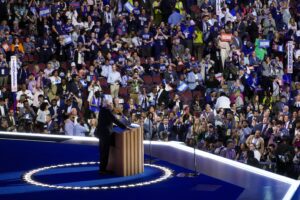
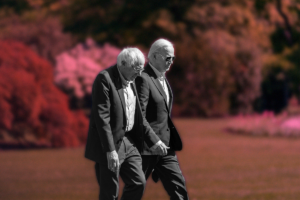

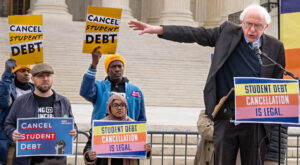
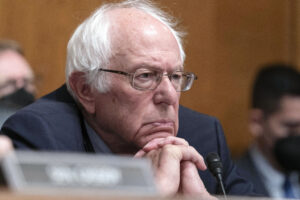


You need to be a supporter to comment.
There are currently no responses to this article.
Be the first to respond.